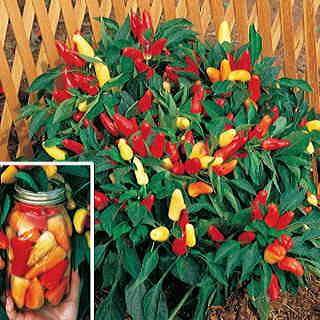




 1
1




 1
1




Rion Mather wrote:Lol. Guess I will go first or be the only one. Either way...my germination rates seem to be improved by starting seeds during the correct phases of the moon.
Our projects:
in Portugal, sheltered terraces facing eastwards, high water table, uphill original forest of pines, oaks and chestnuts. 2000m2
in Iceland: converted flat lawn, compacted poor soil, cold, windy, humid climate, cold, short summer. 50m2
 1
1




Brenda
Bloom where you are planted.
http://restfultrailsfoodforestgarden.blogspot.com/
 1
1




relevant ->Hardy Kiwi Kickstarter l YogaToday 2 week trial l Daring Drake Farm - NY
The farming village was above all a society of philosophers without a need for philosophy - Fukuoka
 1
1








 1
1




 3
3




Perennial Roots Farm http://www.facebook.com/perennialroots/
 1
1




Stewart Lundy wrote:
I have been preparing compost and beds for the coming year and tending to my plants according to Fruit/Leaf/Root/Flower days. I will continue planting seeds from the same batches on random days before and after the "correct" biodynamic days -- and at other times intentionally starting seeds on the "unfavorable" days.




M Troyka wrote:Finally, someone willing to do a side-by-side test. I dread the reactions to the results, though.

Perennial Roots Farm http://www.facebook.com/perennialroots/
 1
1




 2
2




"We're all just walking each other home." -Ram Dass
"Be a lamp, or a lifeboat, or a ladder."-Rumi
"It's all one song!" -Neil Young
 2
2








"We're all just walking each other home." -Ram Dass
"Be a lamp, or a lifeboat, or a ladder."-Rumi
"It's all one song!" -Neil Young




Rion Mather wrote:I have sweet pickle peppers! Yes! I have been trying for weeks. Finally worked on a full moon planting.
"We're all just walking each other home." -Ram Dass
"Be a lamp, or a lifeboat, or a ladder."-Rumi
"It's all one song!" -Neil Young
 1
1




I am still unclear about biodynamic calendar differences.




Judith Browning wrote:
Rion Mather wrote:I have sweet pickle peppers! Yes! I have been trying for weeks. Finally worked on a full moon planting.
Wonderful! Are they those yellow pickled peppers they give us when we buy a pizza? I need to grow more sweet peppers.





Brenda
Bloom where you are planted.
http://restfultrailsfoodforestgarden.blogspot.com/
 1
1




Judith Browning wrote:I am still unclear about biodynamic calendar differences.
Perennial Roots Farm http://www.facebook.com/perennialroots/




Brenda Groth wrote:i have no results yet but did buy the biodynamic calendar 2013 so I'm all ready to start getting results this year.
It makes total sense to me now to plant by the moon after studying it..and I always planted my tender plants after the first full moon in June..so they wouldn't freeze..here in Michigan and that always gives better results than earlier..
looking forward to hearing more results though
Brenda Groth wrote:the north american biodynamic sowing and planting calendar 2013 maria and matthias thun
$13.95 US isbn 978-086315-918-3 florisbooks.co.uk can't remember where I ordered it..somewhere online think it might have been amazon

 2
2




Order copies of my book, Dairy Farming: The Beautiful Way at
www.createspace.com
Help spread the word! Thanks!
struggle - hustle - soul - desire




Brenda
Bloom where you are planted.
http://restfultrailsfoodforestgarden.blogspot.com/




John Polk wrote:I will say, however, that prevailing weather conditions at planting time can throw you off of the calendar. If the weather is unfavorable for planting, especially in short season areas, you cannot just wait another 28 days to get your seeds into the soil. Short season areas do not give you such a luxury of waiting for the perfect moon phase/planet alignment. You plant when you must.








Agricultural Lead for the Shakopee Mdewakanton Sioux Community in Prior Lake, MN

|
You ridiculous clown, did you think you could get away with it? This is my favorite tiny ad!
The new permaculture playing cards kickstarter is now live!
https://www.kickstarter.com/projects/paulwheaton/garden-cards
|








